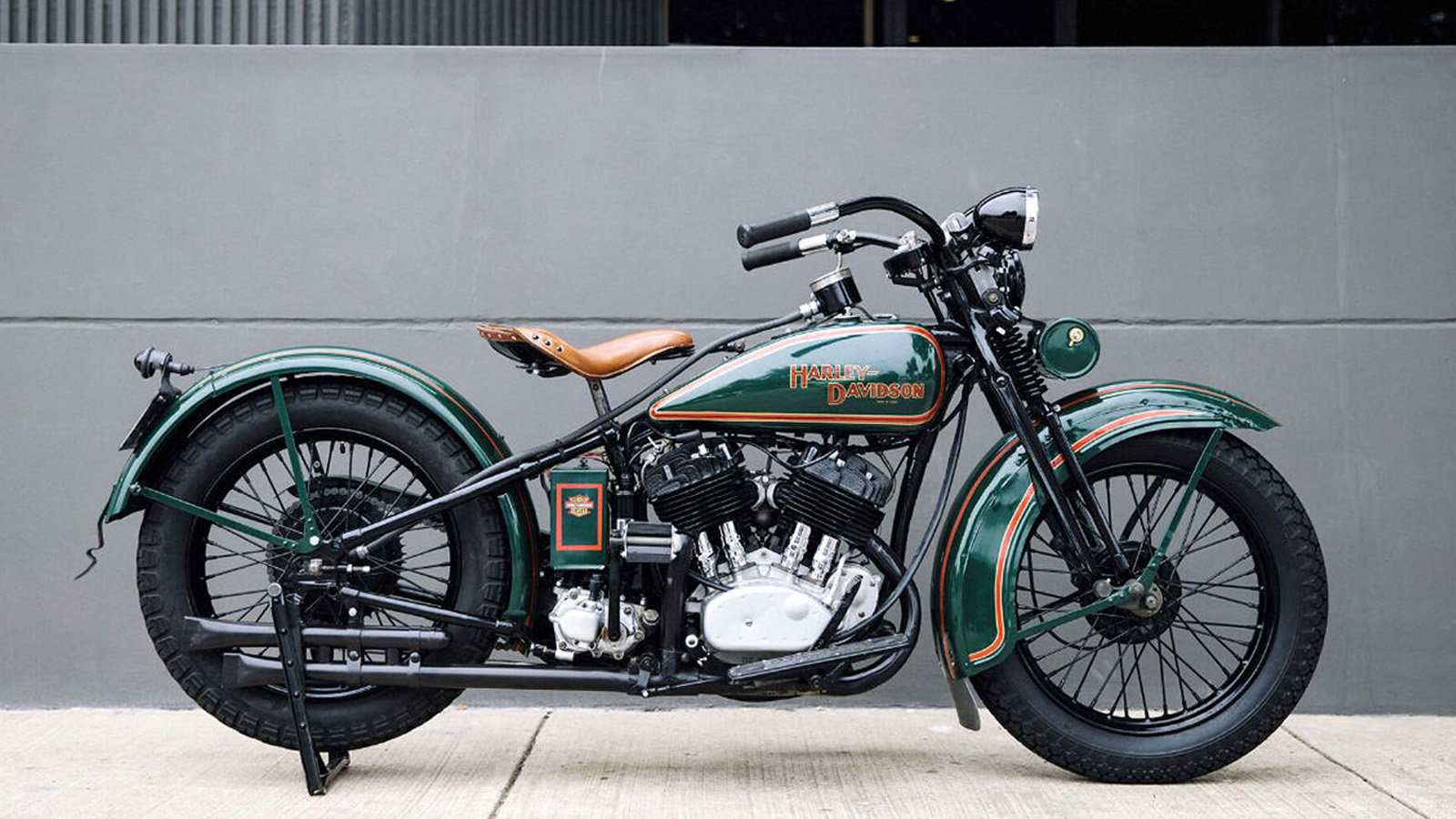Rare Small Case 1930 Harley-Davidson VL Recalled
Dale's Wheels Through Time Museum houses the only remaining example.
















Affected Motorcycle
There have been a number of defining moments in over a century of motorcycle design for Harley-Davidson. Like any big manufacturer, there have also been a few setbacks along the way. While most modern recalls are for small issues, in 1930, the Motor Company rolled back an entire motorcycle line. Affected, was the brand-new, Flathead-powered V-series.
Seventy-Four
At the crux of the issue was an undersized flywheel, and it was no easy fix. Scores of other teething problems led to a major rethink. The V-series was an entirely new design for Harley-Davidson, replacing the J-series and its inlet-over-exhaust, pocket-valve, F-head motor. At the top of the list was the high-compression VL, known as the 'Seventy-Four,' because of its displacement.
>>Join the conversation about this classic VL Flathead right here in HDForums.
Inadequate Increase
Despite being one of the most advanced designs of its time, the 1930 VL was not an immediate success. Enthusiasts were reluctant, instead favoring the proven 1928-29 JD. Hesitancy was further compounded because the VL did not deliver its expected power increase, a direct result of the flywheel, coupled with inadequate valve springs and a less than desirable clutch.
>>Join the conversation about this classic VL Flathead right here in HDForums.
Quickest Margin
In the best way possible, Harley-Davidson had set the bar quite high. In 1928, the JDH was the fastest American-made motorcycle, and almost the fastest production motorcycle in the world—only ceding that title by a margin to the British-built JAP, with its overhead-valve, 1,000cc V-twin. The JDH also remained the quickest Harley-Davidson, long past the introduction of the Knucklehead in 1936.
>>Join the conversation about this classic VL Flathead right here in HDForums.
Modification Cascade
In a massive effort, Harley-Davidson pulled the 1930 VL out of production for an excruciating four months after building approximately 1,300 examples. Critically, the undersized flywheel resulted in a lack of bottom-end torque. To address the issue, Motor Company engineers increased the flywheel diameter and subsequently the engine crankcases. These modifications led to a cascade of other changes.
>>Join the conversation about this classic VL Flathead right here in HDForums.
Design Cost
An altered frame was required to accept the new crankcases. This meant that existing V-series machines had to be dismantled and reassembled. In an unpopular move, Harley-Davidson passed the cost and responsibility of the rebuilds to individual dealerships. Along with the bottom-end, new pistons and springs were provided. Other design problems included an inferior rear brake cross-over shaft and less-than-adequate aluminum brake shoes.
>>Join the conversation about this classic VL Flathead right here in HDForums.
Sole Competitor
The recall timing was both good and bad for Harley-Davidson. The severe global recession of the late 1920s had decimated the American motorcycle industry. While the Motor Company was in dire financial straits, only Indian Motorcycle managed to survive the collapsing economy, emerging as the MoCo's sole competitor. Despite all the problems, Harley-Davidson managed to sell over 10,000 bikes in 1930.
>>Join the conversation about this classic VL Flathead right here in HDForums.
Flawed Bike
Dale's Wheels Through Time Museum, in Maggie Valley, North Carolina, houses the only remaining, unaltered 'small case' VL. Meticulously restored using NOS parts, this rare machine was recently presented by curator Matt Walksler. To listen to this beautiful, but flawed, bike run, along with details about the VL recall, the Wheels Through Time channel offers an eleven-minute video on Youtube.
>>Join the conversation about this classic VL Flathead right here in HDForums.
For help with your maintenance and repair projects, please visit our how-to section in the forum.

